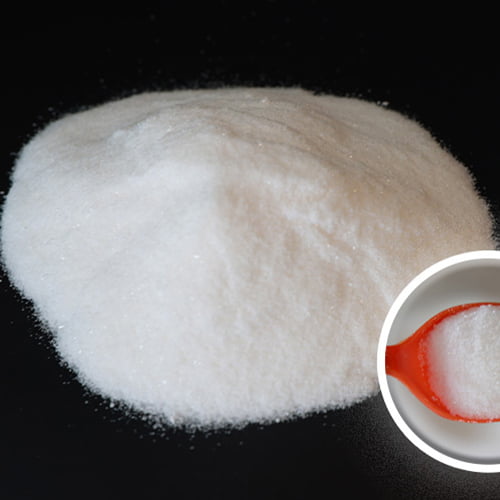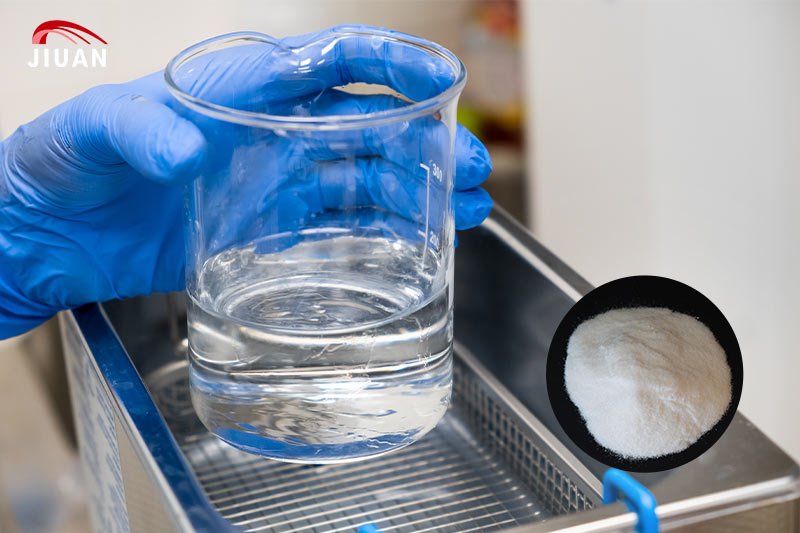pengantar

Sodium formate, a versatile chemical compound with diverse industrial applications, holds significant importance in the realm of chemical synthesis. This comprehensive guide delves into the intricate world of sodium formate synthesis, exploring various methods, reaction conditions, and applications. We will also provide a table summarizing the key points discussed, empowering you with a thorough understanding of this essential chemical synthesis process.
Apa itu Natrium Format?
Sodium formate, a versatile crystalline solid, possesses unique properties crucial for various applications, particularly in organic synthesis. This compound, soluble in water with a slightly alkaline pH, serves multifaceted roles as a buffering agent, a preservative, and a pivotal precursor in the synthesis of numerous organic compounds. Delving deeper into the properties of sodium formate is paramount for those seeking to master the intricate process of sodium formate synthesis.
Methods of Synthesis
Sintesis Langsung
The direct synthesis of sodium formate involves the reaction of carbon dioxide (CO2) with sodium hydroxide (NaOH) to form sodium formate and water. This method is straightforward but requires precise control of reaction conditions to optimize yield.
Oxidative Synthesis
Oxidative synthesis is another route to produce sodium formate, where formic acid is oxidized using an oxidizing agent like hydrogen peroxide (H2O2) in the presence of a catalyst.
Hydrogenation of Carbon Dioxide
The hydrogenation of carbon dioxide using a metal catalyst under high pressure and temperature can also produce sodium formate, especially when sodium hydroxide is present to capture the formate intermediate.
Factors Affecting Synthesis Efficiency
Several factors can influence the efficiency of sodium formate synthesis, including:
Suhu: Higher temperatures can increase reaction rates but may also lead to side reactions.When working with elevated temperatures, it is important to carefully monitor the reaction to prevent unwanted byproducts from forming. Additionally, higher temperatures can also impact the stability of certain compounds, so it is crucial to strike a balance between promoting the desired reaction and avoiding any detrimental side effects. Proper control and optimization of temperature conditions are essential for achieving the desired outcome in chemical reactions.
Pressure: In the case of hydrogenation, higher pressures favor the formation of sodium formate.As a result, using elevated pressures during the hydrogenation process can lead to increased yields of sodium formate. This is due to the greater force pushing the reaction towards the desired product. Additionally, higher pressures can also help to improve the overall efficiency of the hydrogenation reaction, making it a key factor to consider when optimizing the production of sodium formate.
Catalyst Choice: The selection of an appropriate catalyst can significantly affect the reaction pathway and yield.In some cases, a catalyst can increase the rate of a reaction by providing an alternative pathway with lower activation energy. This can lead to higher yields and more efficient processes. However, the choice of catalyst must be carefully considered, taking into account factors such as selectivity, stability, and cost. By understanding the role of catalysts in chemical reactions, researchers can optimize reaction conditions to achieve the desired outcomes.
Reactant Purity: Impurities in the reactants can lead to unwanted side reactions, reducing the yield of sodium formate.To prevent this, it is crucial to use high-quality starting materials and to carefully purify them before the reaction. Additionally, controlling the reaction conditions such as temperature, pressure, and stirring speed can help minimize side reactions and improve the overall yield of sodium formate. By taking these precautions, one can ensure a more efficient and successful synthesis process.
Advantages and Challenges
Keuntungan
- Sodium formate is a versatile compound with a broad range of applications.
- The synthesis process can be scaled up for industrial production.
- It is a renewable resource since CO2, one of its precursors, is abundant.
Challenges
- The need for precise control over reaction conditions can be challenging.
- The synthesis may require expensive catalysts or high energy inputs.
- Managing byproducts and waste from the process can be complex.
Applications of Sodium Formate: A Versatile Chemical

Sodium formate finds diverse applications in various industries:
Pengawet: Sodium formate acts as an effective preservative in the food industry, preventing bacterial growth and extending shelf life.
Deicing Agent: Sodium formate is used in deicing formulations for roads and runways due to its ability to lower the freezing point of water.
Industri Tekstil: Sodium formate serves as a reducing agent and dye carrier in the textile industry.
Industri Minyak dan Gas: Sodium formate is employed in oil and gas well drilling operations to prevent corrosion and scale formation.
Industri Farmasi: Sodium formate is used in the synthesis of various pharmaceutical intermediates.
Table: Comparison of Methods for the Sodium Formate Synthesis
| metode | Keuntungan | Challenges |
|---|---|---|
| Sintesis Langsung | Simple process; no need for additional reagents | Requires high purity CO2 and NaOH |
| Oxidative Synthesis | High yield potential | Requires careful handling of oxidizing agents |
| Hidrogenasi | Renewable and potentially scalable | High pressure and temperature requirements |
Conclusion: sodium formate synthesis
Achieving expertise in sodium formate synthesis hinges on a thorough grasp of the myriad methodologies at one’s disposal, the pivotal factors impacting the synthesis process, and the extensive applications of the resulting product. Through meticulous exploration of these facets, sodium formate synthesis can be executed with precision and efficacy, thereby unleashing a plethora of opportunities across diverse industrial sectors.
In essence, mastering sodium formate synthesis is not merely a technical endeavor but a holistic pursuit that encompasses a deep understanding of synthesis methodologies, process parameters, and real-world applications. With careful consideration of these elements, researchers can harness the power of sodium formate to address challenges, drive progress, and unlock a world of possibilities across numerous industrial sectors.
Pertanyaan Umum
What is the most common method for synthesizing sodium formate?
- The most common method is direct synthesis, due to its simplicity and the availability of raw materials.
Is sodium formate synthesis environmentally friendly?
- Sodium formate synthesis can be environmentally friendly, especially if it utilizes CO2 as a feedstock, contributing to the circular economy.
What are the safety precautions needed during the synthesis of sodium formate?
- Safety precautions include handling corrosive chemicals with care, using appropriate ventilation, and following guidelines for high-pressure reactions if hydrogenation is involved.
Can sodium formate be synthesized at home?
- It is not recommended to synthesize sodium formate at home due to the potential use of hazardous chemicals and the need for controlled laboratory conditions.
What is the future of sodium formate synthesis in industry?
- The future of sodium formate synthesis looks promising, with ongoing research into more sustainable and efficient methods, as well as the development of new applications.


